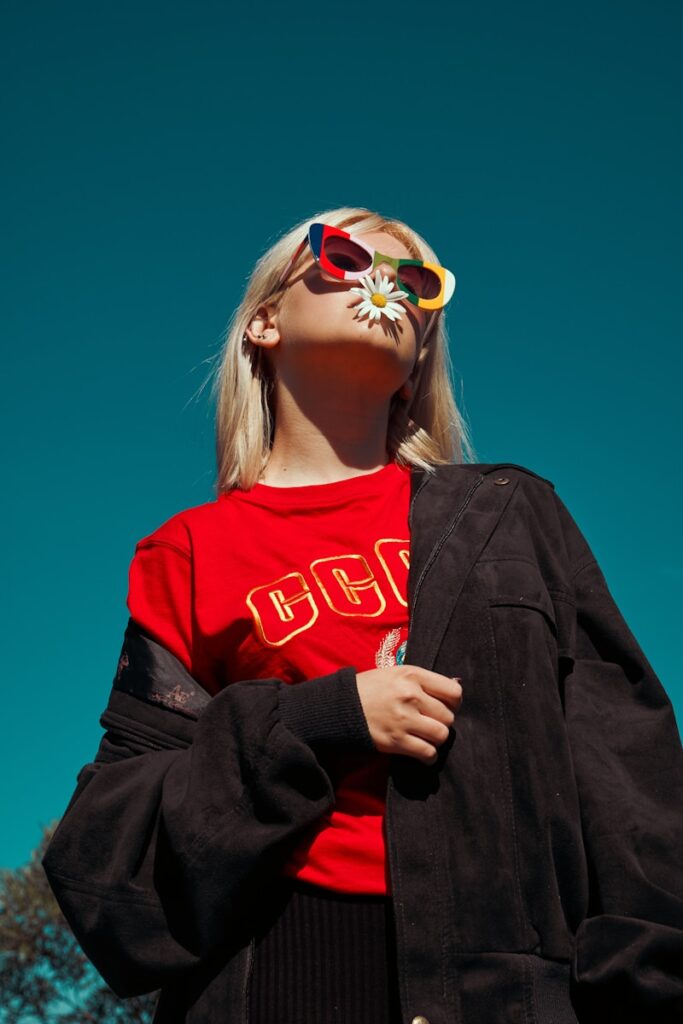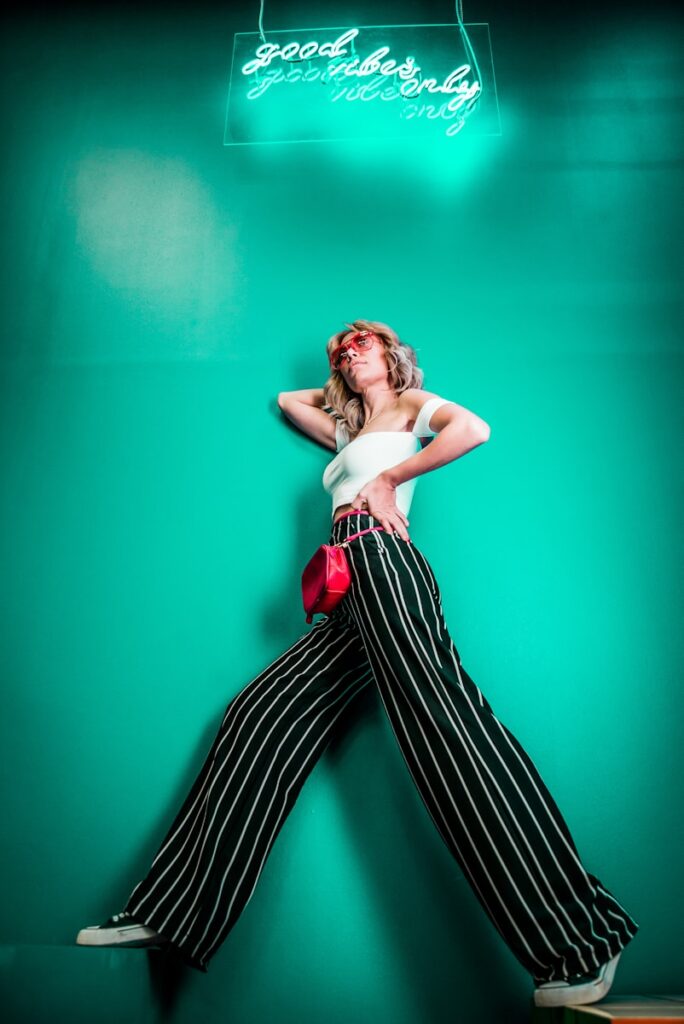
The intersection of fashion and personal identity has always been a fertile ground for discussion and debate. Recent events involving a sustainable fashion brand, Son de Flor, have brought this to the forefront once more. The controversy stemmed from an Instagram post featuring gender-fluid fashion influencer David Ross Lawn modeling the brand’s classic dress. What started as a showcase of personal style spiraled into a heated discussion around gender representation in fashion.
1. **The Instagram Post That Sparked a Debate**: On July 1, David Ross Lawn, a gender-fluid influencer, uploaded a video on Instagram wearing the Son de Flor classic dress. The brand subsequently shared this post, which, despite appearing among countless other images of cisgender women, ignited a “gender-critical” backlash. This reaction highlights the sensitivities surrounding gender-fluid representation in traditionally conservative fashion spaces.
Read more about: Millennials vs. Gen Z: Fashion Wars Over Jeans, Parts, and Socks
2. **The Backlash and Its Echoes**: The backlash was swift and loud, with detractors likening the occurrence to other instances of corporate backlash, such as Bud Light’s partnership with a transgender influencer. Social media was abuzz with comments questioning the appropriateness of a gender-fluid model for a brand perceived as catering to conservative and traditional women. This incident reflects broader societal tensions around gender norms and marketing strategies.

3. **Divergent Reactions from the Public**: While there was significant criticism, the post also received considerable support. Many expressed appreciation for the diversity and inclusivity displayed by Son de Flor. This division in public reaction underscores the cultural divide regarding gender identity and representation in fashion.
4. **The Role of Influencers in Shifting Narratives**: David Ross Lawn’s role as an influencer is crucial in this narrative. With a substantial following on platforms like TikTok and Instagram, Lawn represents a growing movement toward inclusivity and self-expression in fashion. Despite the backlash, Lawn remains committed to showcasing diverse styles, underscoring the importance of influencers in challenging traditional norms.

5. **Son de Flor’s Commitment to Inclusivity**: In response to the backlash, Son de Flor reiterated its commitment to inclusivity. The brand’s stance, despite potential short-term losses, reflects a broader trend in the fashion industry toward embracing diversity. This commitment has also been reflected in their growing follower base post-controversy.
6. **The Broader Cultural Context**: This incident is not isolated. Many brands face similar challenges when aligning their marketing strategies with contemporary social values. The backlash against Son de Flor is part of a wider cultural conversation about the influence of traditional gender roles in consumerism and marketing.
Read more about: Stylists and Designers Reveal 11 Must-See Fashion Trends for 2025

7. **Industry Insights and Expert Opinions**: Fashion experts note that the industry’s move towards inclusivity is not merely a trend but a necessary evolution. Brands that embrace diversity in their marketing strategies are often rewarded with a more loyal and diverse customer base, as seen with Son de Flor’s increased followers despite the initial backlash.
Read more about: Gen Z Fashion Guru’s Guide: 11 Wardrobe Must-Haves for Older Generations
8. **The Importance of Personal Style in the Modern Era**: Ultimately, the debate surrounding this Instagram post brings attention to the broader theme of personal style. Fashion is not just about clothing; it’s an expression of identity and belonging. By featuring a gender-fluid model, Son de Flor is not just selling dresses but also promoting the message that fashion is for everyone.
The ongoing dialogue around gender-fluid representation in fashion is a reflection of changing societal norms. As brands and influencers continue to push boundaries, the conversation will undoubtedly evolve, offering new insights into the role of fashion in shaping cultural identities.
Navigating the evolving landscape of fashion, particularly in the realm of gender-fluid representation, invites a fascinating tapestry of reactions from cultural commentators, influencers, and the fashion industry itself. This rich dialogue not only reflects a shift in societal norms but also highlights the dynamic responses from diverse sectors.
Read more about: Reviving Retro: Your Guide to Vintage Fashion with a Modern Twist

9. **Son de Flor’s Resilience in Diversity**: In the wake of the backlash, Son de Flor has exemplified remarkable resilience. The sustainable fashion brand has not only maintained its stance on inclusivity but has seen an intriguing shift in its consumer base. Despite initial concerns about potential sales declines, the brand’s follower base has surged, proving that its commitment to diversity resonates with a broader audience. This instance underscores the evolving consumer landscape where authenticity and inclusivity often outweigh traditional marketing fears.
The brand’s decision to feature a gender-fluid model is a testament to its belief that fashion transcends conventional gender boundaries. The positive reception from a significant portion of new followers indicates a growing acceptance and appreciation for diverse representations in fashion. By challenging traditional norms, Son de Flor not only broadens its market appeal but also paves the way for a more inclusive future in fashion.
10. **Influencers as Catalysts for Change**: Influencers like David Ross Lawn play a pivotal role in reshaping fashion narratives. With platforms like Instagram and TikTok, these digital personalities wield significant influence, often driving public opinion and fashion trends. Lawn’s choice to openly express their personal style challenges preconceived notions of gender and clothing, encouraging a more fluid understanding of fashion. This shift is not just about breaking barriers but also about empowering individuals to embrace their true selves through clothing.
Influencers, therefore, are not just trendsetters but also cultural catalysts, pushing for a more inclusive and accepting society. Their role in promoting diverse fashion narratives is crucial, offering fresh perspectives and inspiring others to view fashion as a personal and unique expression.
11. **Public Reactions: A Spectrum of Opinions**: The public reaction to the Instagram post featuring David Ross Lawn has been a mix of support and criticism, highlighting the cultural divide in perceptions of gender-fluid fashion. While some question the appropriateness of featuring a gender-fluid model in a traditionally conservative brand, others applaud the move towards diversity and inclusivity. This split in public opinion reflects broader societal tensions surrounding gender norms and the evolving definition of fashion.
The comments on social media, ranging from supportive to critical, offer insight into the diverse beliefs about gender and clothing. For some, the presence of a gender-fluid model challenges their understanding of tradition, while for others, it represents progress and acceptance. This blend of reactions captures the ongoing dialogue about inclusivity in fashion and highlights the powerful role social media plays in shaping public discourse.
12. **Cultural Critiques and Conversations**: The cultural critique surrounding Son de Flor’s Instagram post is part of a larger conversation about gender representation in fashion. Critics argue that featuring a gender-fluid model strays from the brand’s traditional image, while supporters view it as a necessary step towards inclusivity. This debate is emblematic of the broader cultural tensions around gender identity and representation.
These conversations are not just about fashion but about societal values and the evolving concept of identity. By engaging in these dialogues, brands like Son de Flor contribute to a more inclusive cultural landscape, prompting reassessments of traditional marketing strategies and consumer expectations.

13. **Fashion as a Reflection of Identity**: Fashion has always been a powerful medium for expressing personal identity. The controversy surrounding Son de Flor’s Instagram post underscores this, highlighting how clothing choices can both challenge and affirm societal norms. By featuring a gender-fluid influencer, the brand elevates fashion as a tool for self-expression, encouraging individuals to explore and embrace their unique identities.
This perspective shifts the focus from clothing as mere attire to a deeper understanding of fashion as a form of personal storytelling. It challenges individuals to consider how their fashion choices reflect their values, beliefs, and identities, fostering a more personalized and meaningful engagement with fashion.
Read more about: Dazzling Styles: The Best Looks at New York Fashion Week
14. **Industry Impact and Evolution**: The fashion industry’s response to gender-fluid representation is indicative of its broader evolution towards inclusivity. As more brands explore diverse representations in their marketing, the industry as a whole moves towards a more accepting and open-minded approach. This shift is not merely a trend but a reflection of changing societal values and the demand for greater representation in fashion.
The industry’s openness to embracing gender diversity is a testament to its adaptability and willingness to evolve. By recognizing the importance of inclusivity, the fashion industry not only aligns with contemporary social values but also strengthens its relevance and appeal to a more diverse audience.
Read more about: The Little Black Dress: An Icon of Elegance and Versatility

15. **Global Perspectives on Gender and Fashion**: The conversation about gender-fluid representation in fashion extends beyond local contexts, inviting global perspectives on gender identity and expression. Fashion, as a universal language, has the power to transcend cultural boundaries, fostering a broader dialogue about inclusivity and diversity. By featuring diverse models, brands engage in a global conversation about the evolving nature of fashion and identity.
This global perspective encourages a more comprehensive understanding of how fashion intersects with culture, identity, and personal expression. As brands continue to navigate these complex dynamics, they contribute to a more inclusive and interconnected world, celebrating the richness of diversity in fashion.
Product on Amazon: Global Perspectives on Gender and Work: Readings and Interpretations
Price: 64.99 USD
Rating: 4.6 Total reviews: 3
Shopping on Amzon >>
16. **Celebrating Individuality Through Fashion**: Ultimately, the discussion surrounding gender-fluid representation in fashion is a celebration of individuality and personal expression. By challenging traditional norms, brands and influencers alike promote a more inclusive and diverse fashion landscape, where everyone is encouraged to embrace their unique style. This celebration of individuality is at the heart of fashion, reflecting the industry’s ongoing commitment to creativity, diversity, and innovation.
As the fashion industry continues to evolve, it embraces the vibrant tapestry of human identity, celebrating the diverse ways individuals express themselves through clothing. This journey towards greater inclusivity not only enhances the industry’s appeal but also enriches the cultural fabric of society, paving the way for a more accepting and diverse future in fashion.
The narrative around gender-fluid representation in fashion is far from over. As conversations continue to unfold, they will undoubtedly shape the future of fashion, inspiring new ways of thinking about identity, expression, and style.
Related posts:
wingers attack dress store over collab with bearded TikToker
Fluid Influencer and Brand Face Transphobic Backlash






